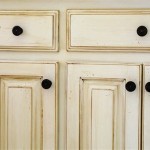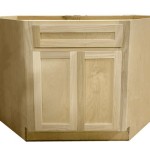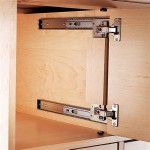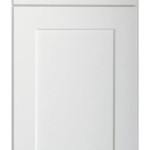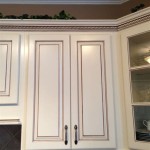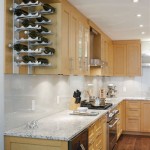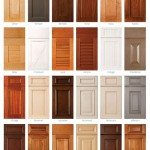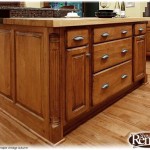16 Colored File Cabinet Ideas For Living Room
The integration of functional storage within a living room setting often presents a design challenge. Traditional file cabinets, typically relegated to office spaces, can appear out of place amidst more aesthetically driven furniture. However, by strategically employing color and creative adaptations, file cabinets can be transformed into stylish and practical additions to a living room, seamlessly blending utility with design.
The key to successfully incorporating colored file cabinets lies in considering the existing color palette, furniture styles, and overall design intent of the room. The chosen color should complement or intentionally contrast with the surrounding elements, creating visual harmony or a calculated focal point. Furthermore, the functionality of the file cabinet should be maximized through intelligent organization and additional surface treatments.
This article explores 16 distinct ideas for incorporating colored file cabinets into living room designs, offering diverse approaches to transform utilitarian storage into aesthetically pleasing and functional design features.
1. Monochromatic Harmony: Tonal File Cabinets
A monochromatic approach involves selecting a file cabinet color that is a shade or tint of an existing dominant color within the living room. For example, if the primary wall color is a muted gray, a file cabinet painted in a lighter or darker shade of gray can create a subtle and sophisticated effect. This approach fosters a sense of continuity and prevents the file cabinet from overwhelming the space. The objective is to create a cohesive design where the eye flows naturally without abrupt color changes.
The choice of finish is also crucial. A matte finish can provide a more subtle, understated look, while a gloss finish can add a touch of visual interest and reflect light, making the file cabinet appear less imposing. Consider the existing finishes of other furniture pieces to ensure a consistent aesthetic.
2. Complementary Contrast: Utilizing Color Theory
Color theory offers a strategic framework for selecting colors that work harmoniously together. Complementary colors, which sit opposite each other on the color wheel, can create a vibrant and visually stimulating contrast. For example, if the living room features predominantly blue tones, an orange file cabinet can introduce a striking and balanced contrast. This approach is best suited for spaces where a bold statement is desired. However, it's important to use complementary colors judiciously to avoid overwhelming the space. Consider using a muted shade of the complementary color or incorporating it as an accent within a predominantly neutral space.
Analogous colors, which are adjacent to each other on the color wheel, offer a more subtle contrast while still maintaining visual interest. For instance, a living room with green accents can be complemented by a file cabinet in a shade of blue-green or yellow-green, creating a harmonious and calming atmosphere.
3. Accent Color Pop: Small Cabinets with Bold Hues
Using a file cabinet as an accent color pop is an effective way to inject personality and visual interest into a neutral living room. A small, brightly colored file cabinet can serve as a focal point, drawing the eye and adding a touch of whimsy. Consider using bold colors such as turquoise, fuchsia, or lime green. The key is to ensure that the accent color is used sparingly and balanced with neutral tones to prevent the space from feeling chaotic.
The size of the file cabinet is crucial in this approach. A small file cabinet is less likely to overwhelm the space and can be easily incorporated into an existing layout. Consider placing the file cabinet in an unexpected location, such as beside an armchair or beneath a console table, to maximize its impact.
4. Metallic Chic: Gold, Silver, or Copper Finishes
Metallic finishes can elevate a file cabinet from a utilitarian object to a sophisticated design element. Gold, silver, or copper paint can add a touch of glamour and luxury to the living room. Metallic finishes work particularly well in modern or contemporary spaces, where clean lines and minimalist aesthetics are prevalent. Consider using a metallic finish on both the file cabinet and the hardware to create a cohesive look.
To prevent the metallic finish from appearing too ostentatious, consider using a brushed or antiqued finish to soften the shine. Metallic accents can also be incorporated through hardware, such as knobs or pulls, rather than painting the entire cabinet.
5. Ombre Effect: Gradient Color Transition
An ombre effect involves creating a gradient of color, transitioning from a lighter shade at the top of the file cabinet to a darker shade at the bottom, or vice versa. This technique adds depth and visual interest to the file cabinet, making it a more dynamic design element. The ombre effect can be achieved using spray paint or by hand-painting the gradient with a brush. Select colors that are closely related to each other on the color wheel to create a seamless transition.
The ombre effect works particularly well with two-drawer or three-drawer file cabinets, where the color transition is more pronounced. This technique can also be applied to multiple file cabinets arranged side by side, creating a larger-scale ombre effect.
6. Pattern Play: Stencils and Decals
Adding patterns to a file cabinet can transform it into a unique and personalized design piece. Stencils can be used to create intricate designs, such as geometric patterns, floral motifs, or abstract shapes. Decals offer a simpler alternative, allowing for easy application and removal of pre-designed patterns. Consider using a stencil or decal that complements the existing patterns in the living room, such as the pattern on the curtains or the rug.
The choice of paint color for the stencil or decal is crucial. A contrasting color will create a bold and eye-catching effect, while a subtle color will create a more understated look. Experiment with different stencil and decal designs to find a look that suits the style of the living room.
7. Chalkboard Paint: Interactive Storage Solution
Chalkboard paint provides a functional and interactive surface for a file cabinet, allowing you to write notes, create to-do lists, or draw designs directly on the cabinet. This is a particularly useful option for families with children, providing a designated space for creative expression. Chalkboard paint can be applied to the entire file cabinet or just a portion of it, such as the front panels of the drawers.
Consider using colored chalk to add visual interest and personalize the chalkboard surface. Chalkboard paint can also be used in conjunction with stencils to create permanent designs that can be highlighted with chalk.
8. Distressed Finish: Vintage Charm
A distressed finish adds character and vintage charm to a file cabinet, making it appear weathered and worn. This technique involves applying multiple layers of paint and then sanding away portions of the top layers to reveal the underlying colors. The distressed finish creates a rustic and eclectic look that works well in farmhouse or bohemian-style living rooms.
The choice of paint colors is crucial for achieving a successful distressed finish. Consider using a combination of neutral colors, such as white, gray, and beige, or incorporating pops of color, such as teal or mustard yellow. Experiment with different sanding techniques to create varying levels of distress.
9. Two-Tone Design: Divide and Conquer
A two-tone design involves painting different sections of the file cabinet in contrasting colors. This technique can be used to highlight specific features, such as the drawers or the frame, or to create a more dynamic and visually interesting look. Consider using a neutral color for the frame and a bolder color for the drawers, or vice versa. The key is to choose colors that complement each other and create a balanced composition.
The two-tone design can also be achieved by using different materials, such as wood veneer on the frame and painted metal on the drawers. This adds texture and visual interest to the file cabinet.
10. Wallpaper Accents: Cohesive Integration
Applying wallpaper to the front panels of a file cabinet can integrate it seamlessly into the living room decor. Select a wallpaper that complements the existing wallpaper or fabric patterns in the room to create a cohesive and harmonious look. Wallpaper can be applied using adhesive and a smoothing tool. Ensure that the surface of the file cabinet is clean and smooth before applying the wallpaper.
Consider using wallpaper remnants from other projects to create a coordinated look. Wallpaper can also be used to line the inside of the drawers, adding a touch of luxury and visual interest.
11. Fabric Paneling: Soft and Textured
Adding fabric panels to the front of the file cabinet can soften its appearance and add texture to the living room. Select a fabric that complements the existing upholstery or curtains in the room. Fabric panels can be attached using adhesive or staples. Ensure that the fabric is taut and smooth to create a professional finish.
Consider using different textures and patterns to add visual interest. Fabric panels can also be used to conceal the file cabinet entirely, creating a more discreet and streamlined look.
12. Hardware Upgrade: Knobs and Pulls
Replacing the existing hardware on a file cabinet can dramatically change its appearance. Choose knobs and pulls that complement the style and color of the living room. Consider using metallic hardware, such as brass or chrome, for a modern and sophisticated look, or using vintage hardware for a more eclectic and charming feel. The size and shape of the hardware should be proportional to the size of the file cabinet.
Experiment with different styles of hardware, such as minimalist pulls, ornate knobs, or leather straps. Hardware can also be painted to match the color of the file cabinet or to create a contrasting accent.
13. Faux Wood Grain: Natural Textures
Applying a faux wood grain finish to a metal file cabinet can create a more natural and organic look. This technique involves using paint and specialized tools to mimic the appearance of wood grain. Faux wood grain finishes work well in rustic or farmhouse-style living rooms.
The choice of paint colors is crucial for achieving a realistic faux wood grain finish. Consider using a combination of brown, beige, and tan tones. Experiment with different techniques, such as dry brushing and stippling, to create texture and depth.
14. Lucite Handles and Legs: Transparent Modernity
Replacing the traditional metal handles and adding lucite legs to a file cabinet creates an ultra-modern and minimalist aesthetic. The transparency of the lucite allows the color of the cabinet to take center stage while providing a sleek, almost floating appearance. This design choice is perfect for contemporary living rooms aiming for a light and airy feel. The lucite accents add a touch of understated luxury without overpowering the space.
The contrast between the colored file cabinet and the clear lucite introduces a subtle visual dynamic. Ensure that the lucite legs are sturdy enough to support the filled cabinet. This approach works especially well with vibrant or pastel painted cabinets.
15. Reclaimed Wood Top: Combination of Materials
Affixing a reclaimed wood top to a colored metal file cabinet marries the industrial with the rustic, creating a unique and visually interesting piece. The warmth and texture of the reclaimed wood provide a counterbalance to the coolness of the metal, resulting in a balanced and inviting design. This approach works best in eclectic or transitional living rooms where the mixing of styles is encouraged. The wood top provides an extra surface for display or storage.
The choice of wood grain and color should complement the paint color of the file cabinet. Ensure the wood top is properly sealed and finished to protect it from moisture and wear. The thickness and size of the wood top should be proportional to the size of the file cabinet.
16. Built-In Look: Integration with Shelving
Integrating a colored file cabinet into a custom shelving unit creates a built-in look, transforming it from a standalone piece into a cohesive element of the living room design. This approach maximizes space efficiency and creates a clean, organized aesthetic. The shelving unit can be painted to match the color of the file cabinet or to provide a contrasting accent. This is a particularly useful option for smaller living rooms where maximizing storage is essential.
The file cabinet can be positioned at the bottom of the shelving unit to provide a grounding effect, or it can be placed at eye level to serve as a focal point. Consider adding doors or drawers to the shelving unit to conceal additional storage. The dimensions of the shelving unit should be carefully planned to accommodate the size of the file cabinet.

File Cabinet Makeover The Home Depot
:strip_icc()/101811736-6ae15896ffb848d4ae498d7ee9c77632.jpg?strip=all)
31 Built In Bookshelf Ideas For Every Room Your Home

Small Home Office Interior Design Ideas

File Cabinet Makeover The Home Depot

Lateral File Cabinet Woodworking Project Woodsmith Plans

Small Home Office Interior Design Ideas

File Cabinet Makeover The Home Depot
:strip_icc()/102102849-6212542288194ecfb18484b1d8c5846e.jpg?strip=all)
31 Built In Bookshelf Ideas For Every Room Your Home

46 Home Office Decor Ideas For Working In Style

20 Genius Living Room Storage Ideas Declutter And Impress
Related Posts

